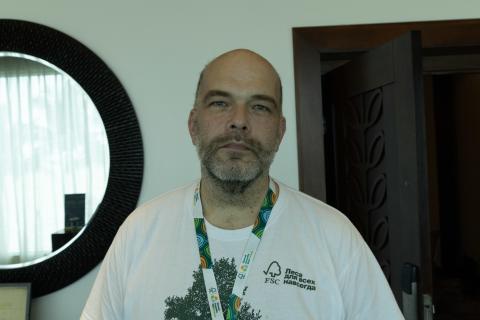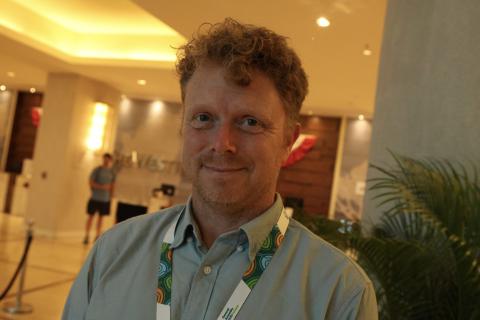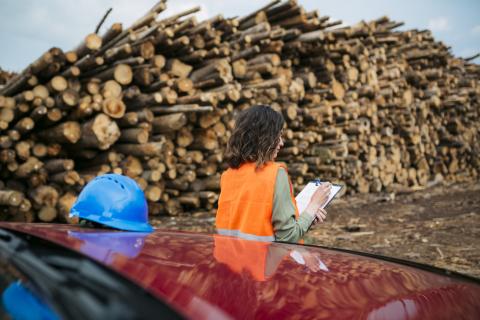Plantations - the step-child of FSC
Forestry expert Berty van Hensbergen takes a nuanced stance on FSC’s requirements for plantations including the infamous criterion on post-1994 conversion. Does the current rule lead to social injustice?
FSC General Assembly 2011
FSC was originally established in order to ensure proper management of natural tropical forest. Conversion of such forests to plantations is regarded as an important contributing factor in deforestation and biodiversity loss. No wonder that the exclusion of post-1994 converted plantations, as outlined in the FSC Principles & Criteria (P&C) 10.9 is a core issue for many FSC members.
But as with most controversies, the issue of plantations isn’t black and white. According to the tropical forestry expert Berty van Hensbergen, the conversion criterion urgently needs to be revisited.
Potential disadvantage for poor people
“The present rule about post-1994 conversion is leading in some cases to perverse outcomes that weren’t considered by the ones who made it”, says Mr. van Hensbergen. “The rule states that certification of forests can’t take place if the current managers are responsible for post-1994 conversion of any parts of the operation. However, it is perfectly possible for a company to buy land which has already been converted to other land uses, and then have it certified”.

“In Northern Mozambique, companies are buying agricultural land – originally Miombo woodland – for the planting of trees. The poor local population are selling this land and then moving on to the forest on the other side of the road where they clear natural forest to open up new fields without any consideration for the negative environmental impacts of their activity.
Because they are clearing a part of those forests for their livelihoods, they can’t ever have them certified if they were to establish their own plantations there. Natural forests in Europe were converted to other uses decades or centuries ago and landowners in these countries do not suffer from this problem. Thus the conversion criterion is causing social injustice”.
Mr. van Hensbergen points out that this sort of development is most likely occurring at a large scale. “According to the Oakland Institute, 60 million hectares of forest land was sold by African countries in 2009 alone. An awful lot of companies are buying land in Africa at obscenely low prices”.
Responsible companies go unrewarded
“There’s also another fairness aspect. In Tanzania, the company KVTC leased 28,000 hectares of, mainly miombo woodland, in 1991. Between 1991 and 2008 they converted 7,000 hectares, and decided to protect 21,000 hectares as per their own policy.
Now, because they converted most of the 7,000 hectare after 1994, they can’t have the plantations certified, although what they have done to conserve biodiversity is way above what most plantation companies are doing.
In the absence of KVTC protecting their natural forest it is very likely that most of it would have been lost to subsistence agriculture or charcoal making.
While they don’t get any reward for their responsible behaviour, another less responsible company may buy the converted land and reap the benefit of having it certified. I do agree with the intent of the FSC P&C criterion 10.9 – to halt conversion of natural forest – but we need to take account of the balance here”.
National Initiatives key to balanced solutions
“I feel that we’re dodging the real issues, and we’ll see forest loss continuing on that account. The world is diverse and ideally, the National Initiatives should be able to guide the conversion issue at national level. In some countries the living standards are high or the natural forests lend themselves well to responsible timber production, in which case there is no good reason for conversion".
"But then there are countries with starving people and an awful lot of forest of low economic value. Plantations may be one way of improving that situation. In any case, wherever conversion occurs, at least 50% of the natural forest should be set aside. The current amount of biodiversity set-aside included in plantation projects is completely inappropriate and natural habitats including forests should account for at least 30% of the forest management area instead of the 10% currently demanded by the FSC system”.
Mr. van Hensbergen is Regional Coordinator for Africa at SSC Ltd. SSC has conducted training on forest certification for over 500 forestry experts from more than 70 countries.
| FSC P&C Criterion 10.9: Plantations established in areas converted from natural forests after November 1994 normally shall not qualify for certification. Certification may be allowed in circumstances where sufficient evidence is submitted to the certification body that themanager/owner is not responsible directly or indirectly of such conversion. |



